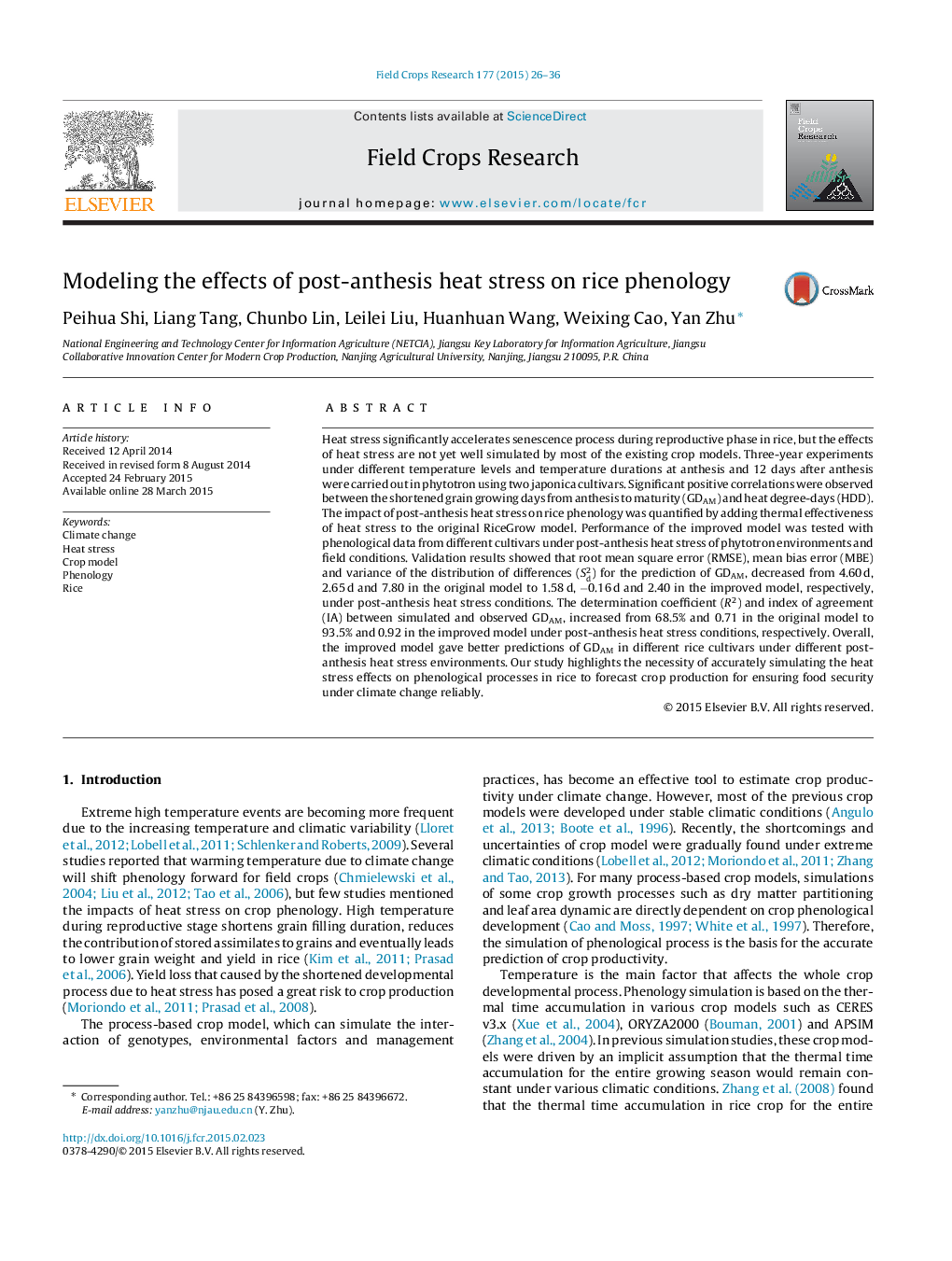| Article ID | Journal | Published Year | Pages | File Type |
|---|---|---|---|---|
| 6374915 | Field Crops Research | 2015 | 11 Pages |
Abstract
Heat stress significantly accelerates senescence process during reproductive phase in rice, but the effects of heat stress are not yet well simulated by most of the existing crop models. Three-year experiments under different temperature levels and temperature durations at anthesis and 12 days after anthesis were carried out in phytotron using two japonica cultivars. Significant positive correlations were observed between the shortened grain growing days from anthesis to maturity (GDAM) and heat degree-days (HDD). The impact of post-anthesis heat stress on rice phenology was quantified by adding thermal effectiveness of heat stress to the original RiceGrow model. Performance of the improved model was tested with phenological data from different cultivars under post-anthesis heat stress of phytotron environments and field conditions. Validation results showed that root mean square error (RMSE), mean bias error (MBE) and variance of the distribution of differences (Sd2) for the prediction of GDAM, decreased from 4.60Â d, 2.65Â d and 7.80 in the original model to 1.58Â d, â0.16Â d and 2.40 in the improved model, respectively, under post-anthesis heat stress conditions. The determination coefficient (R2) and index of agreement (IA) between simulated and observed GDAM, increased from 68.5% and 0.71 in the original model to 93.5% and 0.92 in the improved model under post-anthesis heat stress conditions, respectively. Overall, the improved model gave better predictions of GDAM in different rice cultivars under different post-anthesis heat stress environments. Our study highlights the necessity of accurately simulating the heat stress effects on phenological processes in rice to forecast crop production for ensuring food security under climate change reliably.
Related Topics
Life Sciences
Agricultural and Biological Sciences
Agronomy and Crop Science
Authors
Peihua Shi, Liang Tang, Chunbo Lin, Leilei Liu, Huanhuan Wang, Weixing Cao, Yan Zhu,
